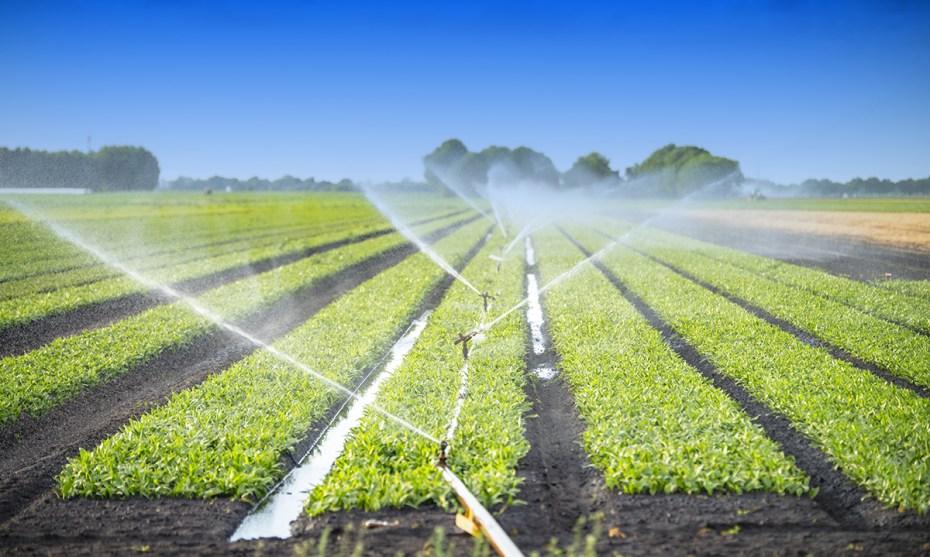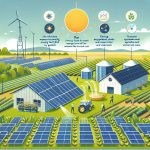Are you a small-scale farmer looking to boost your crop yields without breaking the bank? Imagine having a lush, thriving farm with healthy plants, all while saving money.
Sounds like a dream, right? Well, it doesn’t have to be. Low-cost irrigation systems can transform your farming experience, making it more efficient and sustainable. You’ll discover how these affordable systems can make a significant difference in your agricultural practices.
We’ll delve into the best options available, how they work, and why they’re perfect for small-scale farmers like you. By the end, you’ll be equipped with the knowledge to enhance your farm’s productivity and profitability. Ready to unlock the potential of your farm? Keep reading!

Affordable Drip Irrigation
Drip irrigation is a cost-effective method for small-scale farmers. It uses minimal water while maximizing crop yield. Affordable drip systems are accessible and simple to install. They save money and resources, making them ideal for budget-conscious farmers.
Efficient Water Usage
Drip irrigation delivers water directly to plant roots. This reduces evaporation and runoff. It ensures plants receive the right amount of water. Farmers can conserve water while boosting crop health.
Easy Installation Process
Affordable drip systems have simple installation steps. They require basic tools and materials. Farmers can set up the system without expert help. This saves time and reduces costs.
Low Maintenance Requirements
Drip irrigation systems need minimal upkeep. Regular checks ensure optimal performance. Cleaning filters and checking for leaks keep the system efficient. Farmers can manage maintenance easily.
Increased Crop Productivity
Drip irrigation promotes healthy growth in crops. It provides consistent moisture levels. This leads to higher yields and better quality produce. Farmers benefit from improved productivity.
Cost-effectiveness
Affordable drip systems fit tight budgets. Initial setup costs are low, and long-term savings are significant. Reduced water usage lowers utility bills. Farmers see financial benefits over time.
Environmental Benefits
Drip irrigation supports sustainable farming practices. It minimizes water waste and soil erosion. This method reduces the environmental impact of agriculture. Farmers contribute to eco-friendly farming.
Solar-powered Pump Solutions
Small-scale farmers benefit from solar-powered pump solutions. These systems provide cost-effective irrigation options. Harnessing solar energy reduces expenses and supports sustainable farming practices. Efficient and affordable, they empower farmers to manage water resources effectively.
Harnessing the power of the sun, solar-powered pump solutions offer an efficient and eco-friendly option for small-scale farmers looking to improve their irrigation systems without breaking the bank. These systems convert solar energy into electricity, powering pumps that move water from a source to your fields. This not only reduces reliance on traditional electricity or fuel but also cuts operational costs significantly. ###Understanding Solar-powered Pumps
Solar-powered pumps use photovoltaic panels to generate electricity. This electricity powers a motor that drives the pump to move water. They are particularly effective in remote areas where access to a reliable power grid is limited. ###Benefits Of Solar-powered Pumps
Using solar-powered pumps can lead to significant savings on energy bills. They are also environmentally friendly, as they produce no greenhouse gas emissions during operation. Maintenance is minimal, often requiring only periodic cleaning of the solar panels and pump checks. ###Choosing The Right Solar-powered Pump
Consider the water source distance and elevation when selecting a pump. Also, evaluate the size of your farm to determine the pump’s capacity. For smaller plots, a low-capacity pump might suffice, while larger areas might require a more robust solution. ###Installation Tips For Solar-powered Pumps
Position solar panels in a location that receives maximum sunlight throughout the day. Ensure the pump is securely installed to prevent leaks or damage. Proper alignment and support structures can enhance efficiency and longevity. ###Cost-effectiveness Of Solar-powered Pumps
Initial costs may seem high, but they pay off over time through reduced energy expenses. Government subsidies or grants for solar installations can further ease the financial burden. Think of it as a long-term investment for sustainable farming. ###Real-life Applications And Success Stories
Consider a farmer in Kenya who replaced a diesel pump with a solar-powered one. The transition not only reduced costs but also improved crop yields due to more consistent irrigation. Could this be the breakthrough your farm needs? ###Challenges And Considerations
Weather dependency is a key challenge, as solar pumps may not work efficiently on cloudy days. Having a battery backup or hybrid system can mitigate this issue. Also, ensure that local technicians are available for any needed repairs. ###Future Of Solar-powered Irrigation
As technology advances, solar-powered pumps are becoming more efficient and affordable. They represent a promising future for sustainable agriculture. Are you ready to join the movement towards greener, cost-effective farming solutions?Rainwater Harvesting Techniques
Small-scale farmers benefit from rainwater harvesting techniques. These methods provide low-cost irrigation solutions. Collecting rainwater reduces water costs and supports sustainable farming. Simple tools like barrels and gutters capture and store rain efficiently. This approach is affordable and easy to implement, enhancing water availability for crops.
Rainwater harvesting is a game-changer for small-scale farmers looking to boost their irrigation practices without breaking the bank. Imagine harnessing the power of nature to water your crops, ensuring they thrive even during dry spells. This technique is not only cost-effective but also environmentally friendly, making it a win-win solution for sustainable farming. By capturing and storing rainwater, you can reduce your dependency on external water sources and enjoy a more self-sufficient farming experience.Understanding Rainwater Harvesting
Rainwater harvesting is all about collecting rainwater from surfaces like rooftops and storing it for later use. It’s simple yet effective. Think of it as saving money in a piggy bank, but in this case, you’re saving water. You can use tanks or barrels to store the collected water, ensuring you have a backup supply during dry periods. This technique can be tailored to fit the size and needs of your farm, making it incredibly versatile.Benefits Of Rainwater Harvesting
There are plenty of reasons to consider rainwater harvesting. Firstly, it helps reduce your water bills. More importantly, it ensures you have a steady supply of water, even when rainfall is scarce. Additionally, it’s a sustainable practice that supports environmental conservation. By using rainwater, you contribute to preserving groundwater levels and promote ecological balance. Isn’t it amazing how one simple practice can have such a positive impact?Simple Rainwater Harvesting Systems
You don’t need fancy equipment to start harvesting rainwater. Basic systems include gutters and downspouts to channel water into storage tanks. These can be made from affordable materials like plastic or metal. A simple mesh screen can be installed to keep debris out of the water. You can also use gravity to direct the water flow, minimizing the need for pumps and electricity. Have you ever considered how easy it could be to turn your farm into a rainwater oasis?Maximizing Efficiency
To get the most out of rainwater harvesting, consider the placement and size of your storage tanks. Larger tanks can store more water, but make sure they’re positioned to capture maximum runoff. Regular maintenance is key to ensure your system functions optimally. Clean your gutters and tanks periodically to prevent clogs and contamination. Are you ready to take the steps needed to make rainwater harvesting work for you?Personal Insights And Experiences
Years ago, I faced a particularly dry season that threatened my crops. I decided to try rainwater harvesting, and it turned out to be a lifesaver. Not only did it sustain my crops, but it also inspired my neighbors to adopt the technique. It’s incredible how this simple change transformed our community’s farming practices. Have you ever thought about how your actions could inspire others? Rainwater harvesting isn’t just a technique; it’s a mindset shift towards sustainable farming. By adopting this practice, you not only support your farm but also contribute to a healthier planet. Wouldn’t it be great to know that your farming practices are making a difference?Diy Irrigation Kits
DIY irrigation kits are perfect for small-scale farmers on a budget. They offer a practical solution to water management. These kits are easy to assemble and use. Farmers can customize them to fit their specific needs. With a little effort, you can set up an efficient irrigation system. This method saves time and water, helping crops grow better.
Understanding Diy Irrigation Kits
DIY irrigation kits contain basic components for setting up a system. They often include hoses, connectors, and emitters. These kits are designed to be user-friendly. Farmers with no technical skills can assemble them. Instructions are usually clear and straightforward. Everything needed is in one package, making the process stress-free.
Benefits Of Diy Irrigation Kits
DIY irrigation kits reduce water waste. They direct water exactly where plants need it. This targeted watering helps improve plant health. Kits are cost-effective, making them suitable for small-scale farms. They also conserve resources by using less water. As a result, farmers can lower their water bills. The kits are adaptable to different farm sizes and layouts.
How To Choose The Right Kit
Consider your farm’s size before buying a kit. Smaller kits suit tiny plots, while larger ones cover more ground. Check the type of plants you grow. Some kits work better with specific crops. Look for kits with clear assembly instructions. Reviews from other farmers can guide your choice. Ensure the kit includes all necessary components.
Tips For Setting Up Your Diy Irrigation Kit
Start by sketching a layout of your farm. This plan will guide your setup. Follow the instructions provided in the kit. Test the system to ensure it works well. Adjust the emitters to control water flow. Regular maintenance keeps the system efficient. Check for leaks and blockages often.

Conclusion
Affordable irrigation systems help small-scale farmers boost their productivity. They conserve water, which benefits both crops and the environment. Farmers can choose from many low-cost solutions. Drip and sprinkler systems are efficient and easy to install. These systems require minimal maintenance, saving time and effort.
With improved irrigation, crops grow healthier and yield increases. Better yields mean more income and food security for families. Investing in these systems supports sustainable farming. It helps communities thrive and ensures long-term success. Small steps, big impact. Reliable irrigation is within reach for every farmer.



